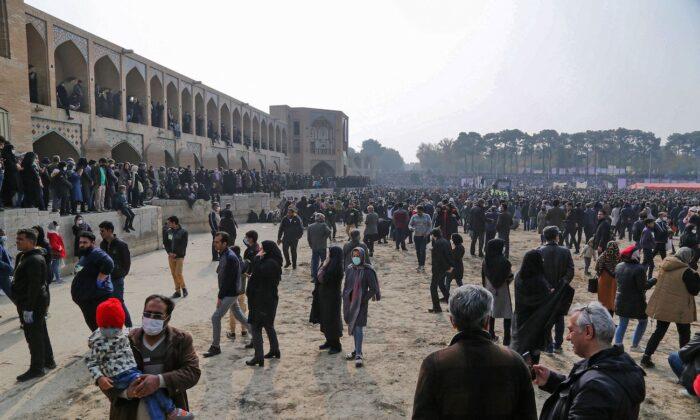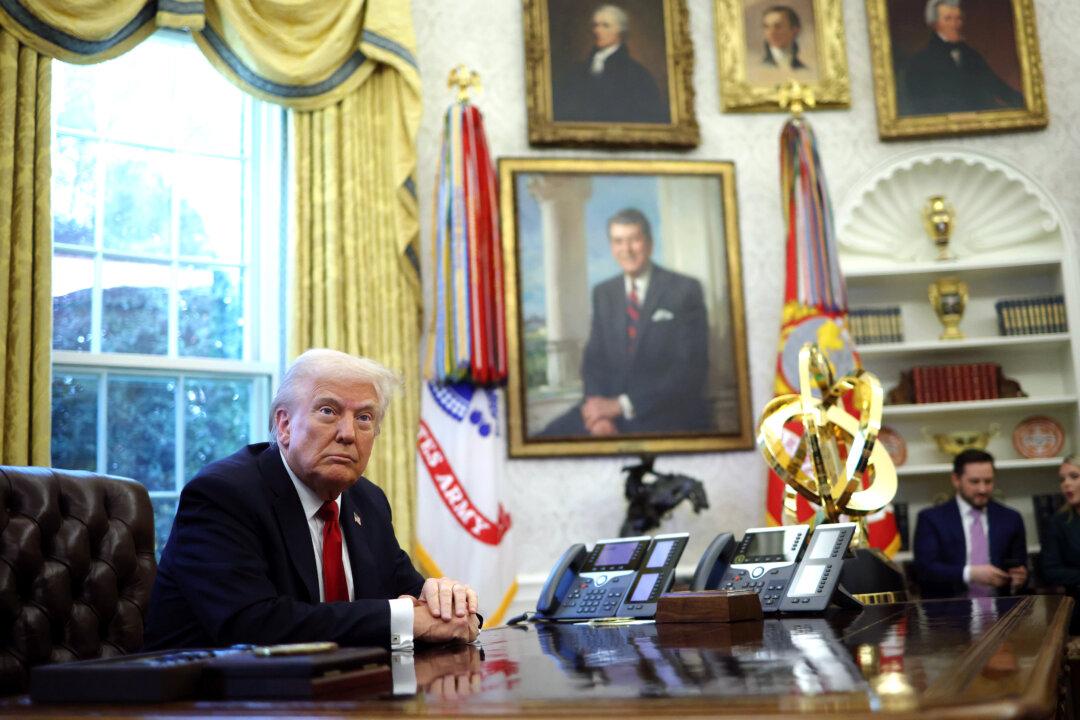Protests in Isfahan, Iran, over water shortages turned violent on Nov. 27 as riot police cracked down on demonstrations and arrested 67 people while dozens were injured, according to local reports.
Thousands of demonstrators have set up tents to protest near the dried-up bed of the Zayandeh Rood River—the largest river in the drought-stricken region—since Nov. 9 in support of farmers who are angry over water shortages.
Authorities have blamed the dwindling water supplies on the worst drought in 50 years. But critics say it’s also due to mismanagement, with many claiming that authorities have diverted water from the city to supply the neighboring province of Yazd. That same pipeline has also been
repeatedly damaged.
The Iranian regime has promised to help farmers and resolve the issue.
“I have ordered the ministers of energy and agriculture to take immediate steps to deal with the issue,” First Vice President Mohammad Mokhber
said on local state-run TV.
But over the weekend, authorities wielding batons, shields, guns, and tear gas violently cracked down on the demonstrations after weeks of protests. Prior to this, security forces had set fire to some of the farmers’ tents, according to local reports that confirm
video footage posted on social media.
The violent clashes between protesters and the regime continued for three days and resulted in multiple arrests, according to authorities.
“We have arrested 67 of the main actors and agitators behind the troubles,” Police General Hassan Karami told state-run
Fars news agency.
Karami said there were about 2,000 to 3,000 “rioters” involved in the protests in Isfahan, roughly 250 miles south of Tehran, the Iranian capital.
But according to the
Human Rights Activists News Agency (HRANA), as of Nov. 27, at least 214 protesters, including 13 underage citizens, had been arrested, and the majority of them had been transferred to the Islamic Revolutionary Guard Corps’ regional quarters, known as Saheb-al-Zaman or Ghoddusi Basij Base in Isfahan.
Some of the arrested protesters were released by officials shortly afterward, according to HRANA, while others were relocated to Isfahan, Khomeini Shahr Prisons, and the Isfahan women’s penitentiary.
Dozens of protesters reportedly suffered eye wounds after police fired pellets at protesters, according to the agency.
“In just one hospital, there were about 19 patients who were injured by shooting last Friday and Saturday. Therefore, with all likelihood, contrary to what official media have reported, far more than 19 people have been injured,” a specialist and eye surgeon in Isfahan
told HRANA. “The distance of pellets on these patients’ faces indicates that they have been shot from a close range–maybe only a few meters. If the bullets are made of lead, even being hit from a 30-meter distance can cause irreparable damages.”
Following news of the violent protests, U.S. State Department spokesman Ned Price
wrote on Twitter that Washington was “deeply concerned about the violent crackdown against peaceful protestors.”
“The people of Iran have a right to voice their frustrations and hold their government accountable,” Price said.
Former revolutionary and political prisoner Abolfazl Ghadiani said Supreme Leader Ali Khamenei is personally responsible for “the atrocities committed” against the protesters in Isfahan.
“All of the suppressive bodies ... and their commanders are responsible for the [attack on] the peaceful, civil, and non-violent protest of the people of [Isfahan], but the central figure responsible for this aggression and the atrocities committed is Iran’s dictator Ali Khamenei who must be held accountable,” Ghadiani wrote in a
statement published to Telegram, translated by
Iran International.
Khamenei has said the water crisis is a top priority for the government.
While droughts have occurred throughout Iran for years, their frequency has recently increased. The
Iran Meteorological Organization estimates that some 97 percent of the country is dealing with drought at some level.





